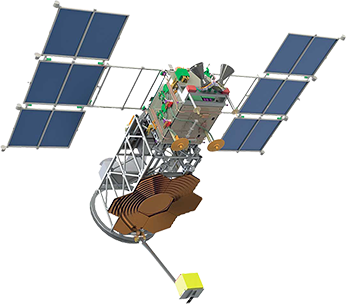Lomonosov Satellite
Lomonosov Moscow State University started a new scientific-educational project “Lomonosov”. Comparing to the previous satellites “Tatiana” and “Tatiana-2” this satellite will be bigger. In 2011 we’ll celebrate the 300th anniversary of an outstanding Russian scientist, the founder of our University, who contributed greatly into the scientific development. Therefore his name onboard the satellite is a tribute of memory and respect for this remarkable scientist.
Discussing about the purposes of the future experiments onboard this satellite we came to the conclusion that the studies of the extreme physical processes in the atmosphere, near-Earth space and in the Universe as a whole will never better fit this project. These problems are on the front burner of the up-to-date fundamental space physics and astrophysics. Besides, one of the most outstanding scientific results was obtained by M.V.Lomonosov within the field of the studies of the atmospheric electricity and atmospheric luminescence – aurora. Currently these problems are still of great importance.

Scientific Goals
The project includes the following scientific equipment installation on-board the satellite intended for the following problems studies:
- The studies of the cosmic rays of the extremely high energy (1019 -1020 eV) near the energetic spectrum cut-off, predicted by Greisen, Zatsepin and Kuzmin (GZK cut-off).
- The studies of the space gamma-bursts – the most energetic processes in the Universe within the optical and gaama ranges.
- The studies of the transient luminous phenomena in the upper atmosphere, started during the previous MSU space projects “Universitetsky – Tatiana” and “Universitetsky – Tatiana – 2”.
- The studies of the magnetospheric particles – the possible sources of the transient and quazi-stationary phenomena in the upper atmosphere within the X-ray and optical ranges.
 Lomonosov
Lomonosov









